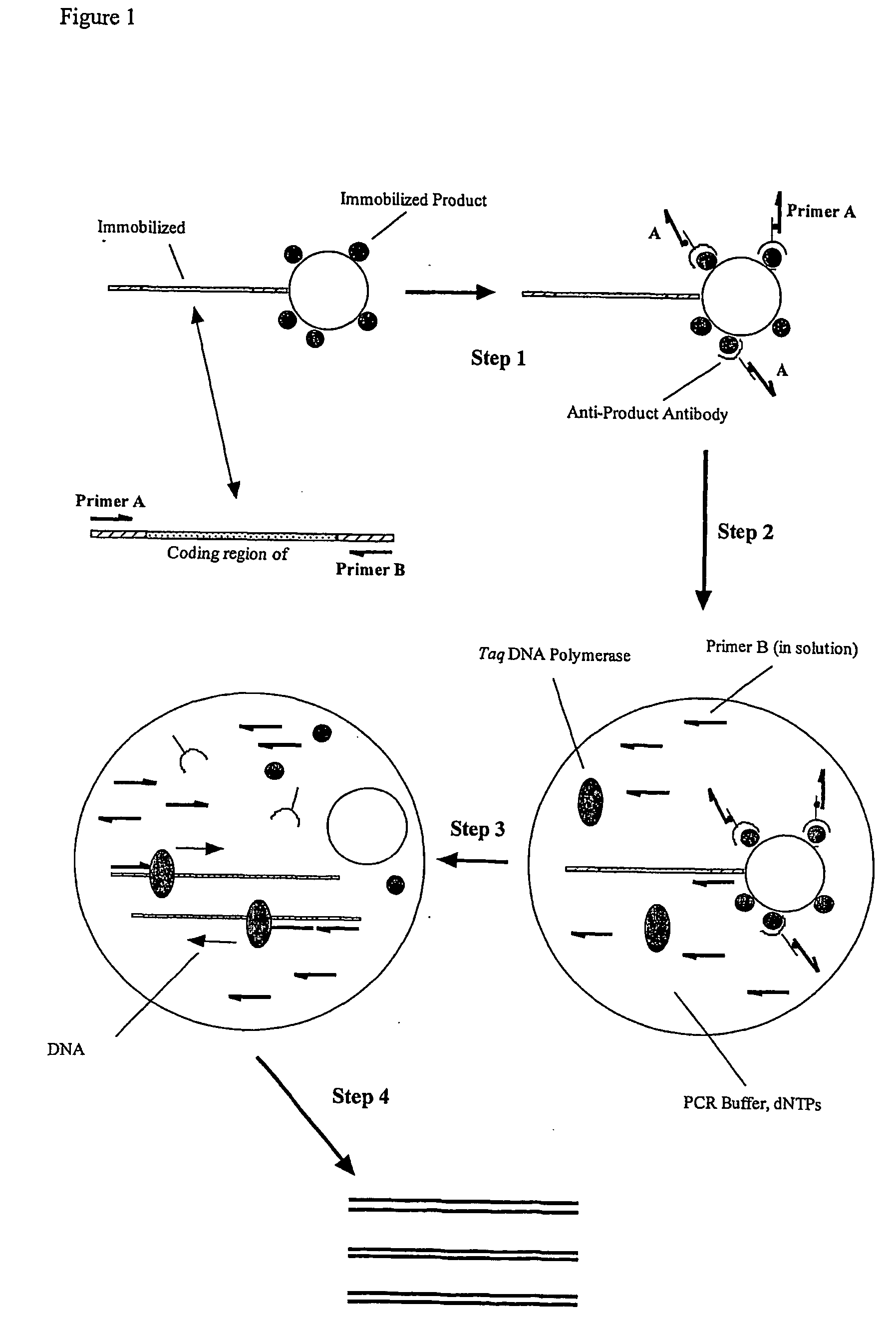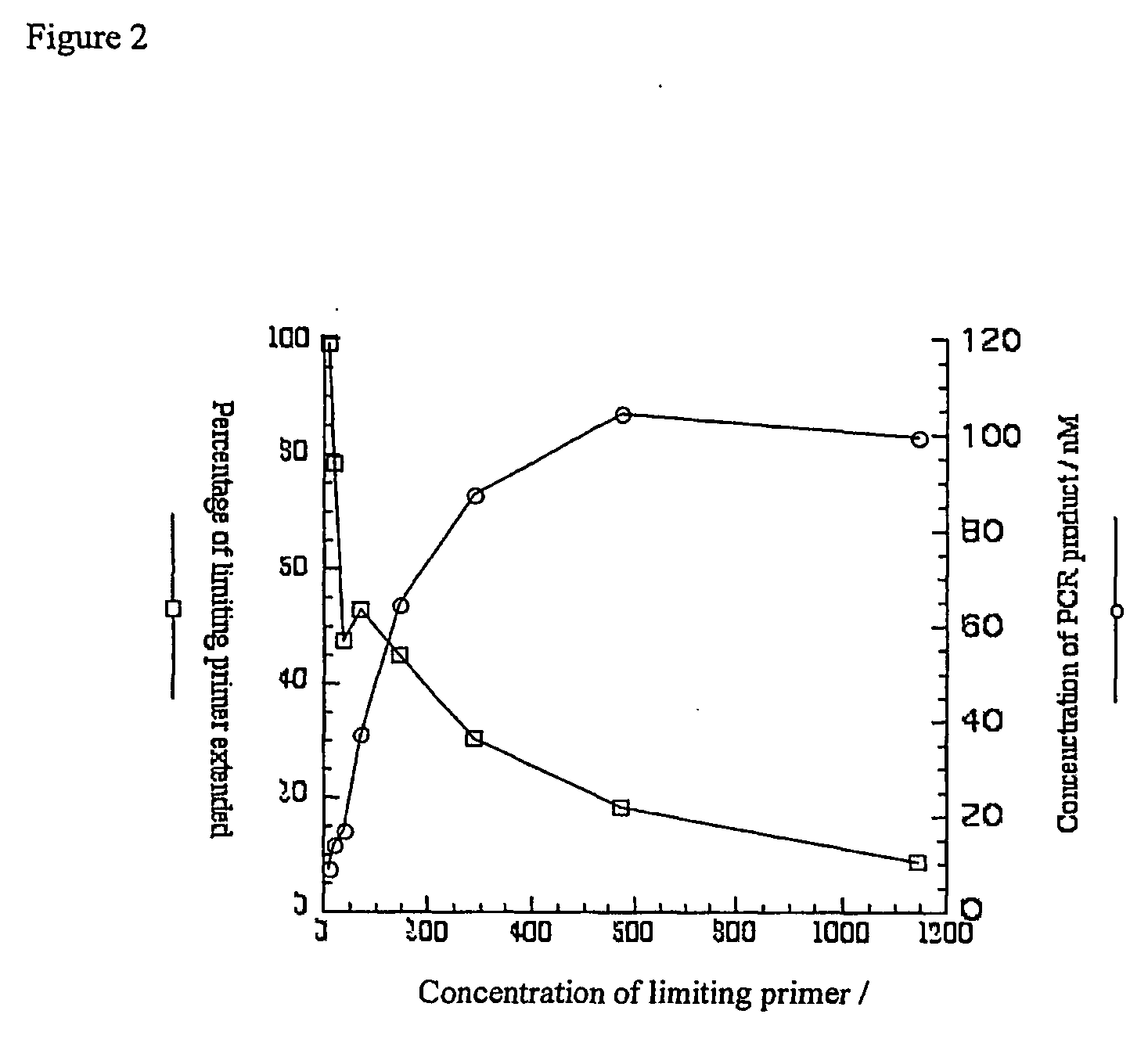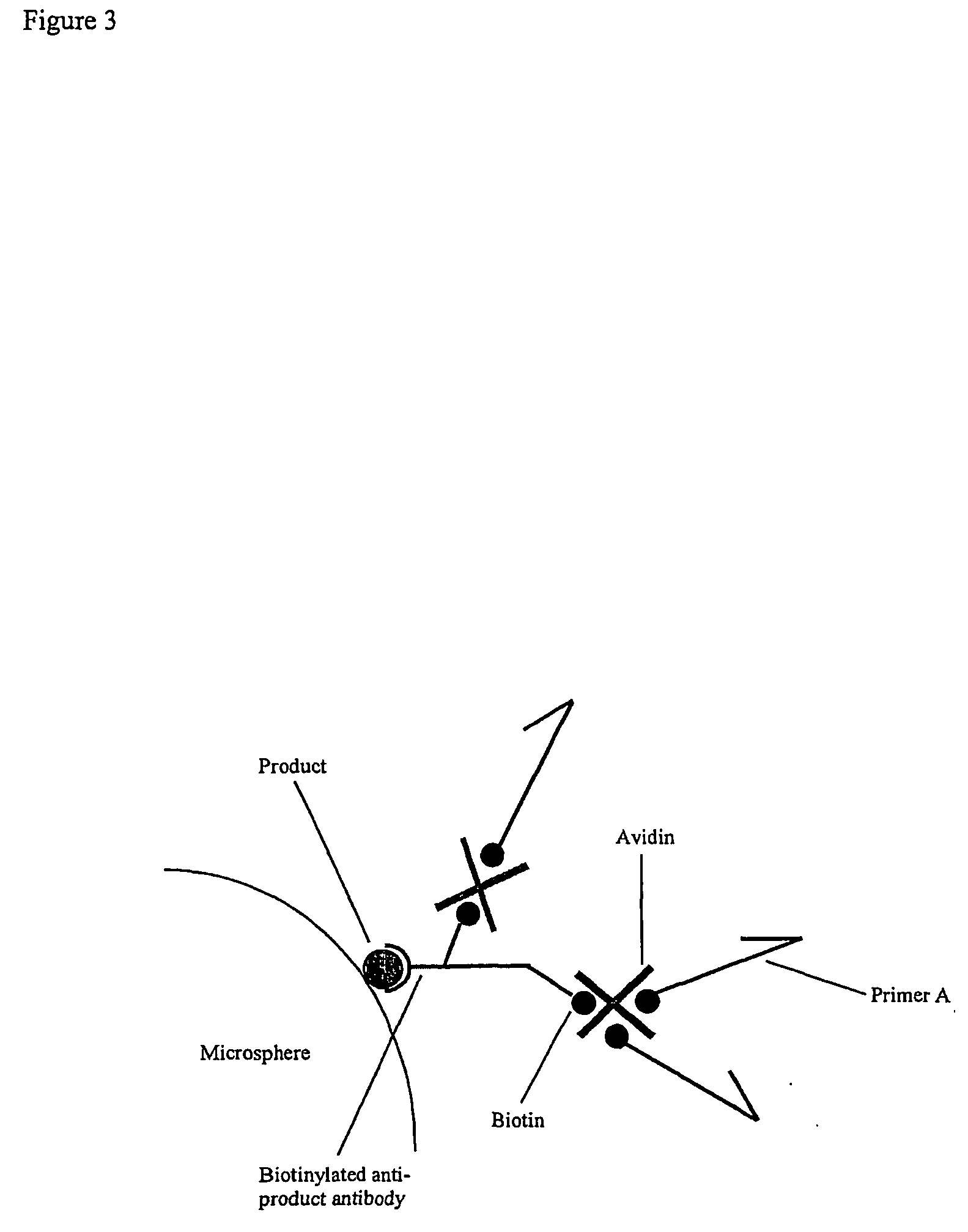Selective gene amplification
a gene and gene technology, applied in the field of selective gene amplification, can solve the problems of reducing the activity of the nucleic acid comprised by the genetic element, reducing the activity of the gene, and lacking a modified substra
- Summary
- Abstract
- Description
- Claims
- Application Information
AI Technical Summary
Benefits of technology
Problems solved by technology
Method used
Image
Examples
example 2
PCR In Emulsion Compartments
[0271] The OPD-HA gene is used as the template in an emulsion reaction. PCR reactions, with both primers A and B in solution are set up, emulsified and cycled using a protocol modified to include a slightly longer extension phase (the emulsion may take longer to rise to the desired temperature), with the inclusion of varying concentrations of BSA. The products are visualised by gel electrophoresis (FIG. 5). The efficiency of the PCR increases with increasing BSA concentration, up to 10 mg / ml (the maximum concentration used).
[0272] Model Selection
[0273] The OPD-HA gene is chosen as the +ve gene and the DHFR gene as the -ve. Four populations of microspheres are prepared, as follows:
[0274] 1. Microspheres carrying 1 DHFR gene each;
[0275] 2. Microspheres carrying 1 OPD-HA gene each;
[0276] 3. Microspheres carrying 1 OPD-HA gene each, incubated subsequently with a 1000-fold molar excess of biotinylated primer A (lmb2-1.bio), likely to yield between 500 and 1000...
example 3
Quantitation Of Asymmetric PCR In Emulsions with Varying Quantities Of Limiting Primer Immobilized On Beads
[0282] Biotinylated DNA encoding the N-FLAG-OPD-HA gene is immobilized on 1 .mu.m diameter streptavidin-coated microspheres at a concentration of I gene per rnicrosphere. Biotinylated primer lmb2-7 is then immobilized on the microspheres at various concentrations. The microspheres are washed and subsequently 10.sup.7 icrospheres are transferred to a 200 .mu.l PCR reactions which are then emulsified and cycled as in the previous example. The emulsions are broken and the aqueous phase retrieved with the addition of 200 .mu.I 25 .mu.g / ml yeast tRNA (Sigma) to act as a carrier for the DNA.
[0283] The amount of DNA amplifiable by PCR is quantitated by competitive PCR essentially as described in (Gilliland et al., 1990) with the gene DHFR-HA (amplified from the vector pIVEX-DHFR-HA with the primers lmb2-5 and pIVB5) as competitor, using the primers lmb2-7 and pIVB9. FIG. 7 shows the r...
example 4
Preparation Of Antibody-Neutravidin Conjugates for Recruitment Of Biotinylated Primers
[0284] In order to provide a means of recruiting a biotinylated primer to an antibody (in turn recruited to a product-specific antibody), a chemically crosslinked antibody-neutravidin conjugate is prepared as follows.
[0285] 1. Add 50 .mu.l iminothiolane (Sigma) at 5 mg / ml in DMF to 1 ml goat anti-rabbit IgG (minimal cross reactivity with human, mouse and rat serum proteins; Jackson) at a concentration of 1.8 mg / ml in 0.01 M phosphate, 0.25 M NaCl, pH 7.6, and incubated for 30 minutes at 37.degree. C. with mixing. The antibody is purified on a PD-10 column (AP Biotech), eluting in PBS.
[0286] 2. Dissolve 2.5 mg sulfo-SMCC (Pierce) in 50 .mu.l DMSO and add to 750 .mu.l neutravidin (Pierce) at 10 mg / ml in water. React for 1 hour at room temperature with mixing. Purify on a PD-10 column, eluting in PBS.
[0287] 3. Mix together the neutravidin and the antibody in a 5:1 or 10:1 molar ratio (neutravidin in e...
PUM
| Property | Measurement | Unit |
|---|---|---|
| concentration | aaaaa | aaaaa |
| diameter | aaaaa | aaaaa |
| diameter | aaaaa | aaaaa |
Abstract
Description
Claims
Application Information
 Login to View More
Login to View More - R&D
- Intellectual Property
- Life Sciences
- Materials
- Tech Scout
- Unparalleled Data Quality
- Higher Quality Content
- 60% Fewer Hallucinations
Browse by: Latest US Patents, China's latest patents, Technical Efficacy Thesaurus, Application Domain, Technology Topic, Popular Technical Reports.
© 2025 PatSnap. All rights reserved.Legal|Privacy policy|Modern Slavery Act Transparency Statement|Sitemap|About US| Contact US: help@patsnap.com



